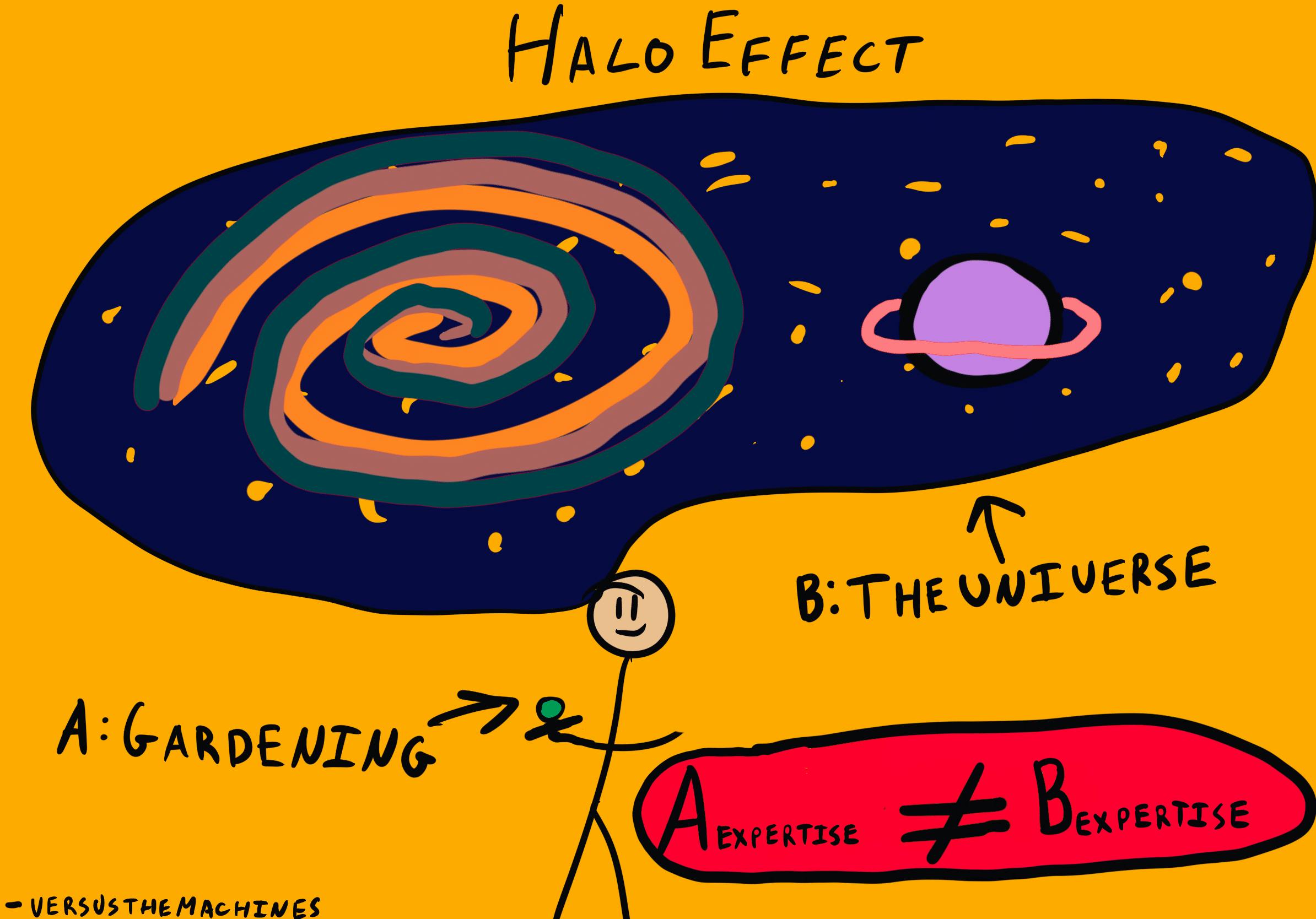Why do positive impressions produced in one area positively influence our opinions in another area?
Halo Effect
, explained.What is the Halo Effect?
The halo effect is a cognitive bias that claims that positive impressions of people, brands, and products in one area positively influence our feelings in another area.

Where this bias occurs
Suppose your boss comes up to you at work and asks if your coworker, Jake, would make a good team leader for an upcoming project. You don’t know Jake all that well, but he’s attractive and dresses nicely, so you assume he’s also intelligent and sociable. Even though you’ve never seen any evidence that Jake would excel in a leadership position, you vouch for him because your positive impression of his appearance influenced your judgment of his other traits and abilities.
The halo effect is a perception error that distorts how we evaluate people and things. It causes us to generalize from a single positive trait or characteristic to assume the presence of other positive qualities, resulting in biased judgments. So, when we like one thing about someone, we tend to have a positive predisposition toward everything else about them.
While biases often impact entire groups, the halo effect primarily occurs at the individual level, shaping how we evaluate everything from other people to physical products. For example, if you specifically value one brand of hair care products, you may be likely to evaluate their new line as amazing, even if it has a lot of negative reviews. Let’s take a closer look at some of the main ways the halo effect can impact your perceptions, preferences, and prejudices.














